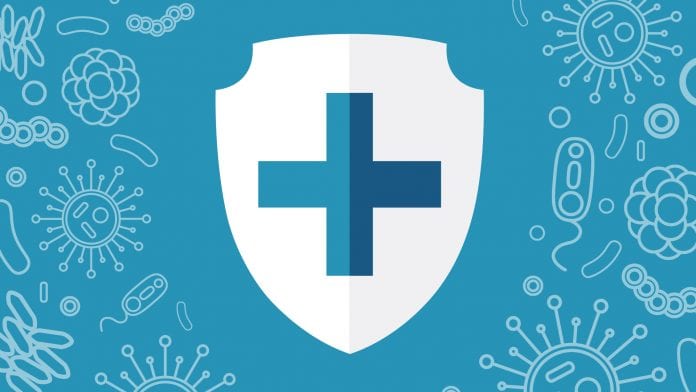
T cells are a vital part of the body’s immune response to many viruses, so could they offer an insight into COVID-19 immunity?
Gladstone Institutes scientist Nadia Roan has been researching T cells and their role in the spread of HIV and long-lasting infections. In severe cases of COVID-19, T cells are heavily depleted, leading Roan to apply her understanding of the cells to how individuals respond to the virus.
Roan and team catalogued the T cells of people who have recovered from mild cases of COVID-19, publishing their analysis in Cell Reports Medicine. The research sheds light on what a successful immune response to COVID-19 might entail and has implications for vaccine development.
T cells and COVID-19
In order to fight off viruses the body must use antibodies which attach to specific molecules on the surface of pathogens and destroy them. However, with a COVID-19 infection, these antibodies appear to disappear rapidly after an infection.
Roan, who is also an associate professor of urology at UC San Francisco, said: “Most studies on host immunity to SARS-CoV-2 have focussed on the antibody response. However, other studies also suggest that SARS-CoV-2 can elicit a strong T cell response.”
This raises two important questions; whether the SARS-CoV-2 infection that causes COVID-19 activates T cells that are long-lived and could confer long-term immunity against the virus, and whether the T cell response could explain why some people recover from infection after only minor ailments, while others succumb to protracted illness sometimes ending in death.
To answer these questions, Roan and her team obtained blood samples from nine donors who had recovered from a confirmed SARS-CoV-2 infection after having experienced only mild symptoms.
Roan added: “We reasoned that these patients would have immune systems that are particularly good at eliminating the virus.”
Do the answers lie in recovered patients?
Roan’s group used a technique called CyTOF, which characterises T cells according to the proteins they contain or carry on their surface. Different combinations of proteins dictate the different roles T cells play in an infection and can be used as markers to identify the types of T cells present in a person’s blood. Because CyTOF can track nearly 40 different protein markers at once, the researchers can detect many different characteristics in any given cell.
“Knowing the characteristics of SARS-CoV-2 specific T cells is important to inform us of their functional properties, including their ability to persist long-term in convalescent individuals,” says Roan.
There are two main kinds of T cells; CD4+ T cells, whose main role is to stimulate the overall immune system’s response to an invader, and CD8+ T cells, many of which kill infected cells. Within these broad categories, CyTOF can distinguish many more subcategories.
After subjecting the patients’ samples to CyTOF, Roan’s team discovered intriguing patterns in the SARS-CoV-2 specific T cells that may explain how these patients recovered from COVID-19.
Breaking down the findings
The team found that the patients’ CD4+ T cells specific to the COVID-19 virus belong to a category called “Th1” known to effectively fight viruses, and not to categories associated with other types of inflammation that are less effective against viruses and can lead to immune-mediated pathology. The researchers say this could help explain the patients’ recovery, given that, in contrast, severe COVID-19 cases are characterised with uncontrolled inflammation and tissue damage.
They found that the CD4+ T cells in the samples are mostly ‘memory’ and ‘helper’ T cells, which stimulate the production of pathogen-specific antibodies.
Thirdly, the patients’ CD8+ T cells belonged to a subcategory known to protect against various other viruses. Roan and her group speculate that these cells are toxic to infected cells, long-lived, and able to proliferate quickly.
Interestingly, a large proportion of the T cells specific to SARS-CoV-2 carried a surface protein that is known to mark long-lived T cells. Indeed, these cells were found in convalescents more than two months after infection.
Roan’s team cultured these cells in the presence of a common T cell growth factor currently being tested as a way to improve clinical outcomes for COVID-19 patients with a depleted store of T cells. The cells markedly increased in numbers, demonstrating a powerful ability to proliferate.
Roan commented: “These results suggest that SARS-CoV-2-specific T cells are not only long-lived but can be maintained by constant proliferation. Therefore, they can presumably fight off a new infection long after the first one has cleared.”
Roan and her team have now begun comparing T cell responses in mild and severe cases and will investigate the possibility that prior exposure to other coronaviruses might boost a person’s immune response to the new virus.









